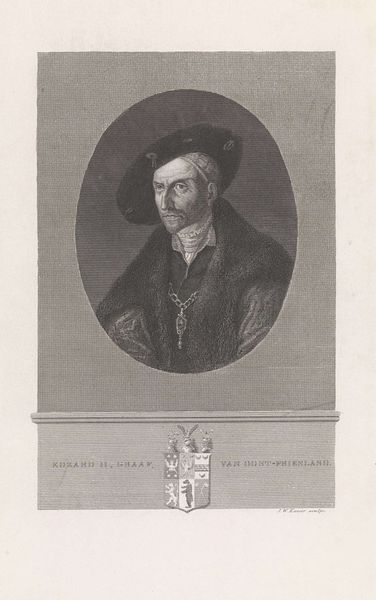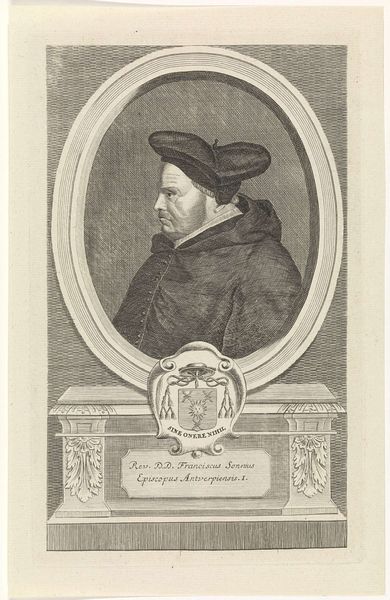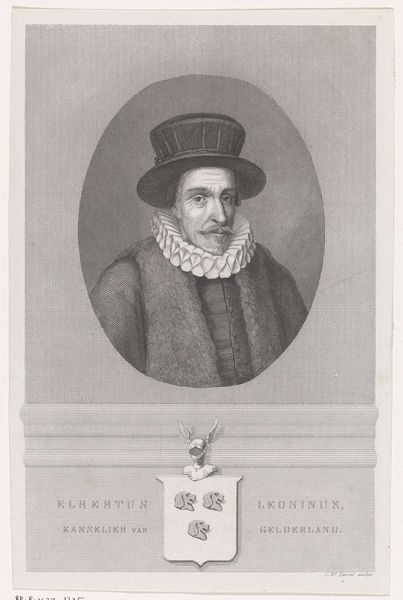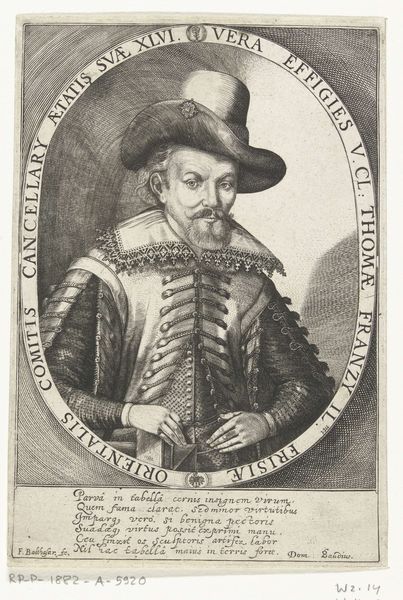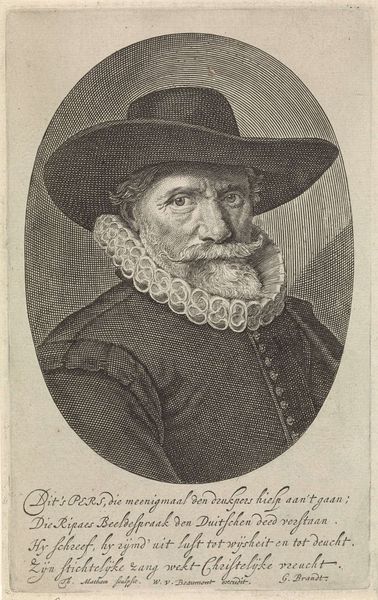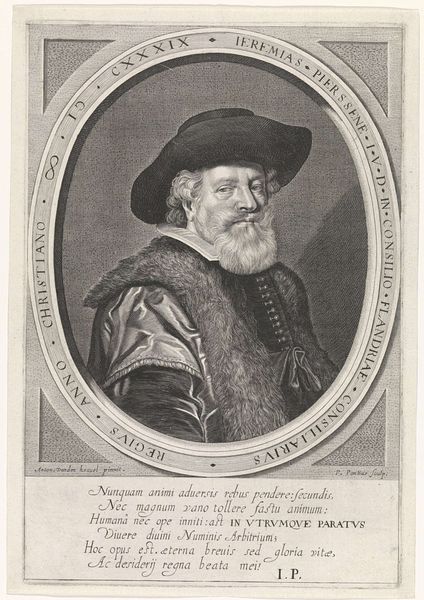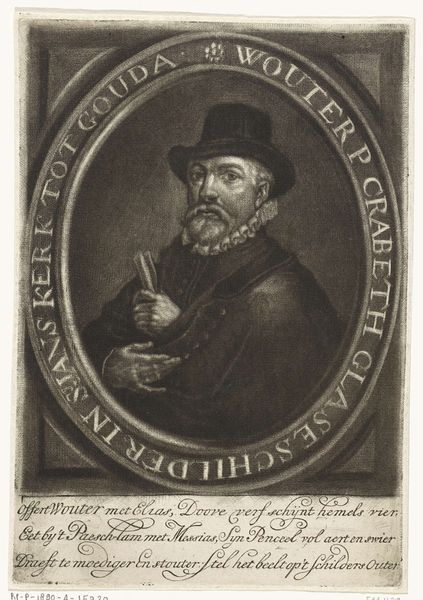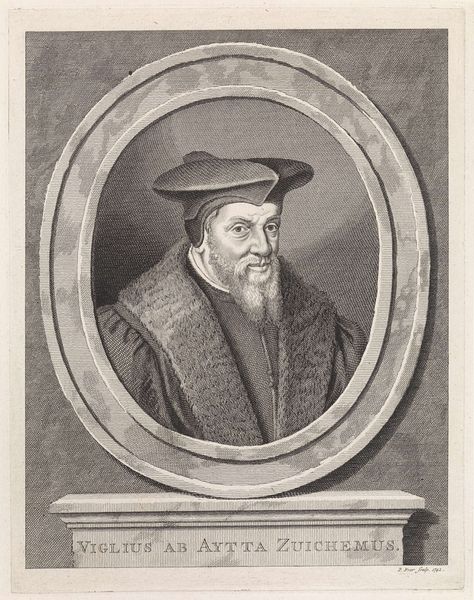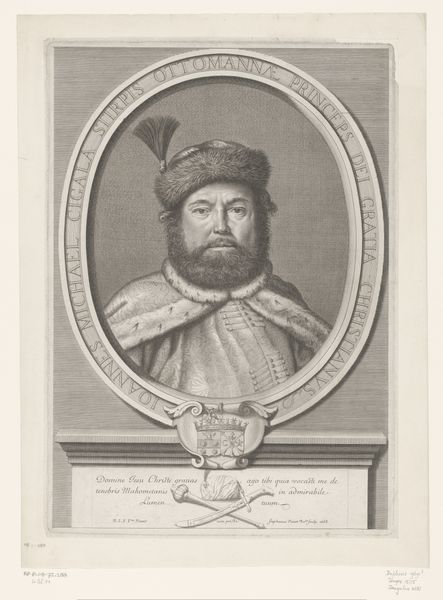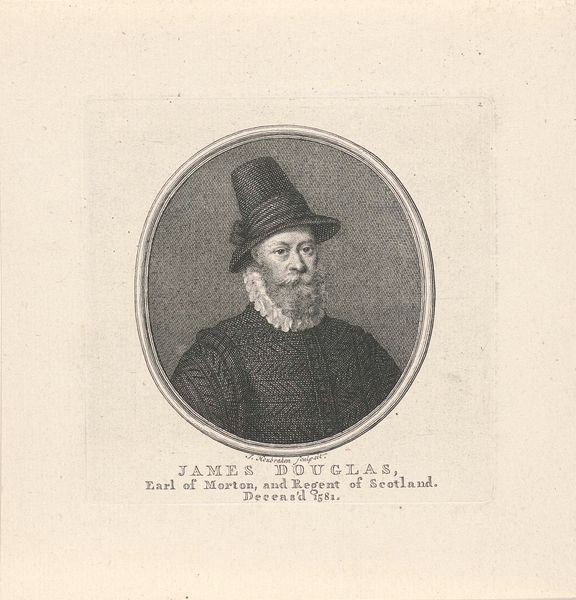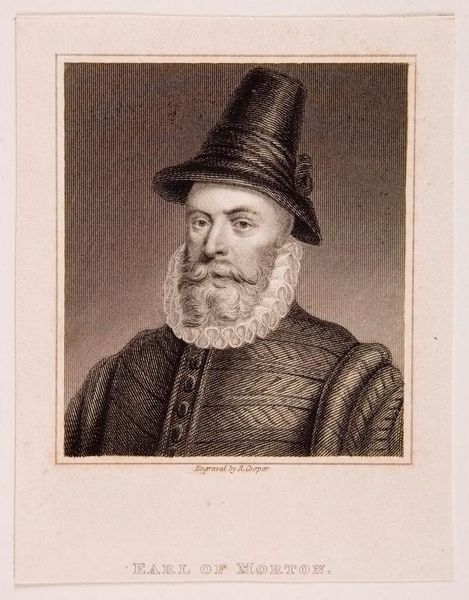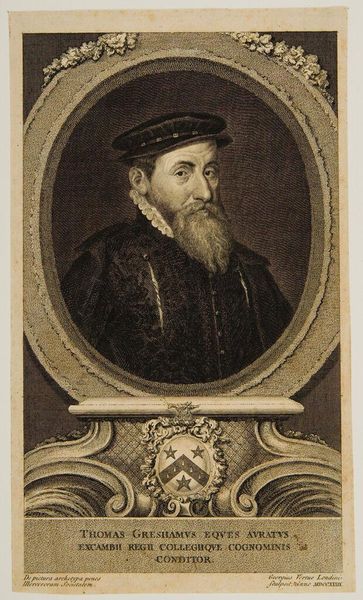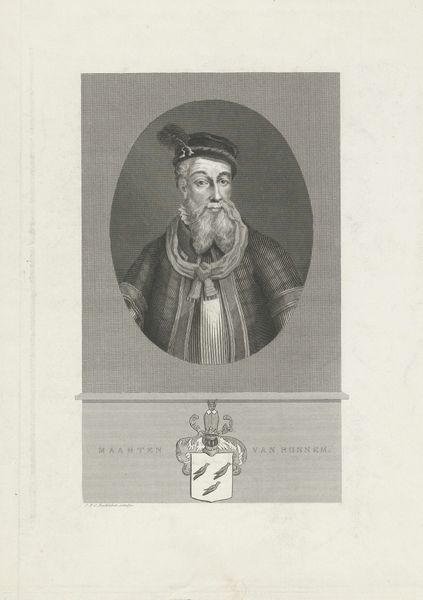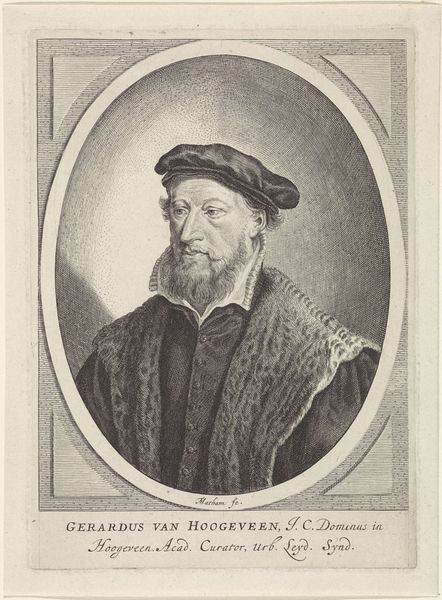
print, engraving
#
portrait
# print
#
old engraving style
#
historical photography
#
framed image
#
19th century
#
history-painting
#
engraving
#
realism
Dimensions: height 205 mm, width 125 mm
Copyright: Rijks Museum: Open Domain
Curator: Isn't it fascinating how a simple engraving can carry so much history? This piece, created sometime between 1841 and 1879 by Edouard Taurel, offers us a glimpse into the life of Viglius ab Aytta Zuichemus. Editor: It’s an intense image, isn’t it? Almost severe. The stark contrast in the engraving gives it such gravitas, like peering into a past shrouded in responsibility. And the subject’s gaze is direct and unwavering. It seems like he’s daring you to look away. Curator: The beauty of portraiture! There is a story in every line, crease, and carefully rendered detail of the luxurious fur stole around his shoulders. That combined with his cap indicate a man of status. I like how Taurel managed to portray this historical figure, both severe and distinguished, with such delicacy in the engraving itself. Editor: Absolutely. The coat of arms below his image certainly adds another layer. Heraldry can be dense with symbolism, it speaks to legacy, lineage, power. One wonders about the specifics of its imagery; the swan, the dog, even the Latin motto "Vita Vigiliae"... everything had a carefully chosen meaning. This combination creates a whole personal cosmology! Curator: And “Vita Vigiliae”, the life of wakefulness…fitting, perhaps, for a man involved in 16th-century politics! It really underscores the idea of constant vigilance. This print not only immortalizes Viglius but offers clues into his world, his values, and maybe even a little hint about his personality. It's as much an historical document as it is a work of art. Editor: It makes me wonder about his perspective on ‘wakefulness’ now, across centuries of time. Symbols endure but their meanings shift. Today “wakefulness” makes me think about mindfulness. Was Viglius really aware, mindful of others in his decisions or more mindful of himself? What do we see when we really look at this engraving, and what is revealed to us in turn? Food for thought. Curator: Beautifully said. It encourages us to actively question how images communicate over time. Thank you. Editor: My pleasure!
Comments
No comments
Be the first to comment and join the conversation on the ultimate creative platform.
